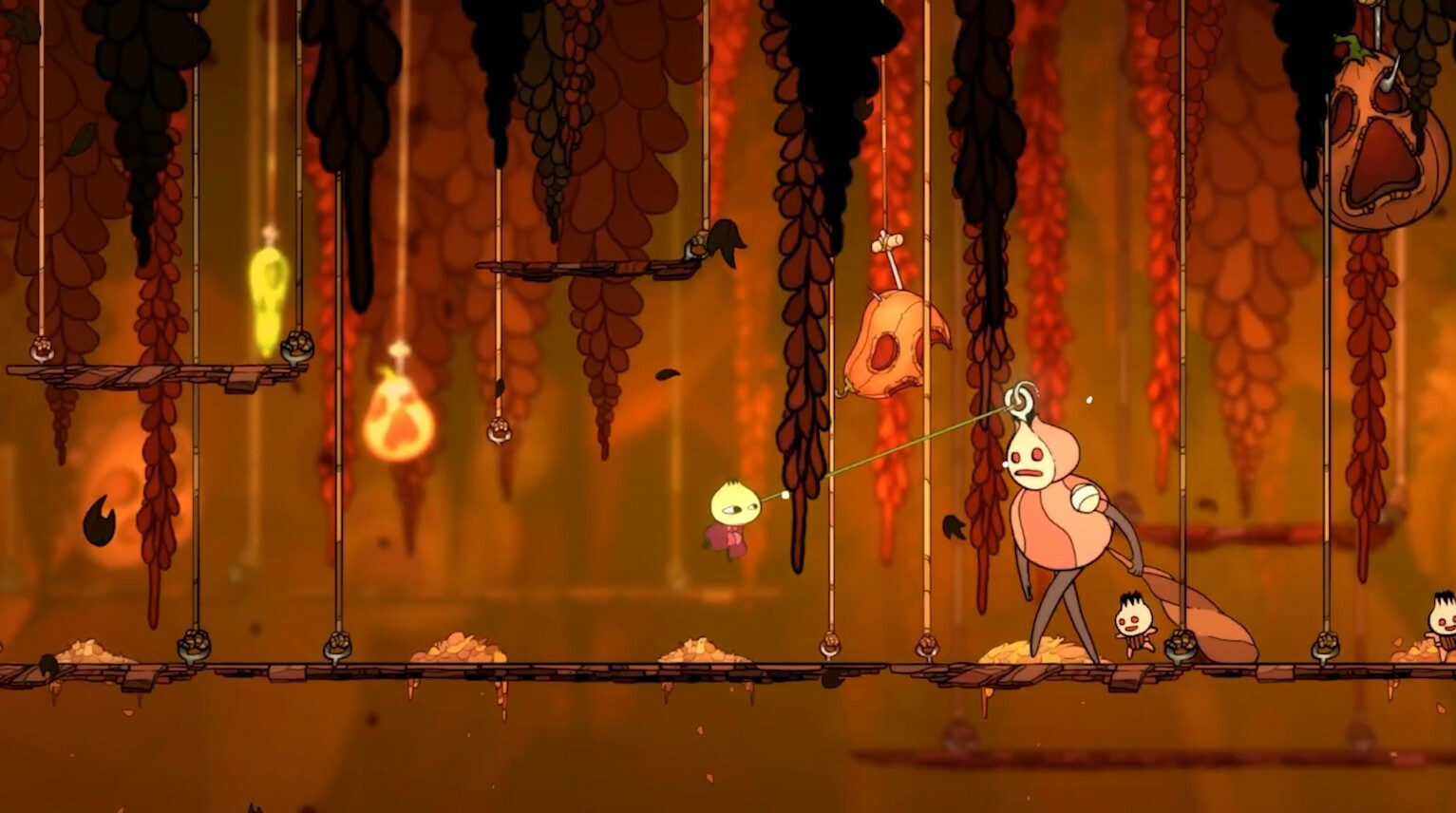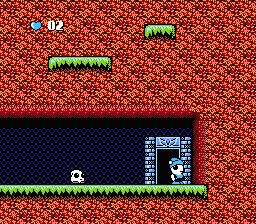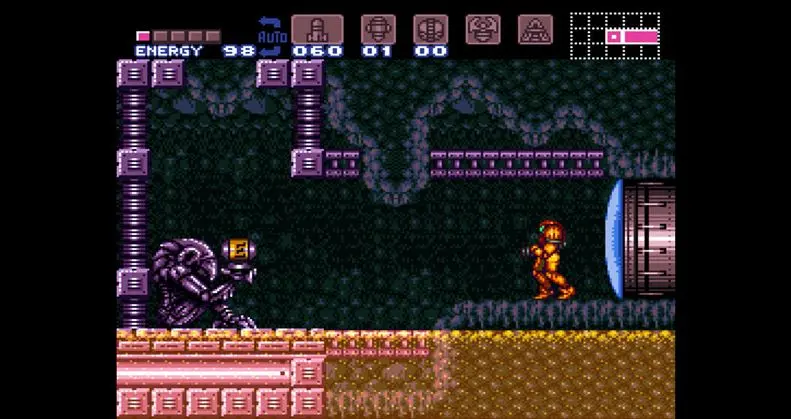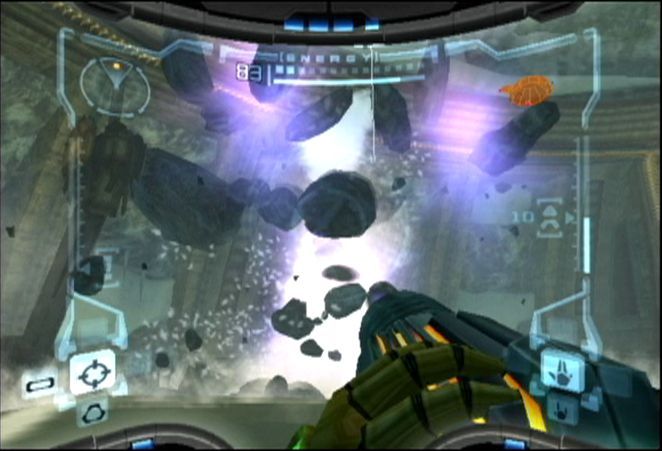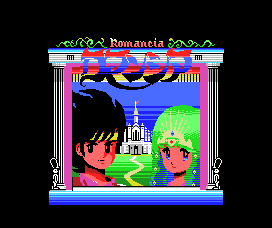Results
Layers Deep
dark, dash, double jump
Explore a non-linear Southern Gothic-inspired world. Find upgrades and use them to expand your combat and exploration capabilities. Get lost in a dense atmospheric and dangerous map full of enemies and interesting characters.
Ufouria: The Saga
sci-fi, pixel art, gritty
Ufouria: The Saga, released in 1991 for the NES, is a unique and ambitious game that blends elements of strategy, action, and adventure into a compelling sci-fi narrative. Developed by Sunsoft, the game stands out for its non-linear structure, allowing players to freely explore different planets and choose the order in which they tackle missions. One of the game's most noteworthy features is its open-ended exploration. Players can freely navigate their spacecraft across vast star systems, encountering various celestial bodies and encountering random events. This sense of freedom and unpredictability adds an element of surprise and replayability to the experience. The gameplay itself is a mix of genres, with players engaging in top-down shooting sequences when exploring planets, as well as side-scrolling action segments when venturing into enemy bases or structures. The combat is challenging, with a variety of enemies and bosses to contend with, each requiring different strategies and tactics. Ufouria's narrative is also noteworthy, weaving a complex sci-fi tale that unfolds through text-based conversations and cutscenes. The game's story revolves around an interstellar conflict between various alien races, with the player's actions and choices influencing the course of events and the game's multiple endings. While the game's graphics were impressive for its time, showcasing detailed sprites and vibrant, varied environments, it's the game's depth and ambition that truly set it apart. Ufouria's genre-blending gameplay, open-ended exploration, and complex narrative made it a unique and challenging experience that pushed the boundaries of what was possible on the NES.
Super Metroid
platformer, environmental puzzles, sci-fi
Super Metroid, released in 1994 for the Super Nintendo Entertainment System, is widely regarded as one of the greatest and most influential games in the Metroidvania genre. Here's a detailed description, assuming you're familiar with the genre conventions: 1. Nonlinear Exploration: Super Metroid's world, the planet Zebes, is a vast, interconnected labyrinth that encourages backtracking and sequence-breaking. As you acquire new abilities and upgrades, previously inaccessible areas become available, creating a sense of exploration and discovery. 2. Atmosphere and Environmental Storytelling: The game excels in creating an immersive and eerie atmosphere through its visual design, sound effects, and minimal dialogue. The environments themselves tell a story, with the remnants of civilizations and encounters with various lifeforms adding depth to the world. 3. Power-up Progression: Samus Aran's progression is tightly linked to the acquisition of new abilities, such as the Grappling Beam, Space Jump, and Plasma Beam. These upgrades not only enhance combat capabilities but also open up new traversal possibilities, encouraging revisiting previous areas. 4. Boss Battles and Sequence Breaking: Super Metroid features memorable boss encounters, each with unique strategies and patterns to master. Additionally, the game allows for sequence breaking, where skilled players can access areas and acquire upgrades out of the intended order, adding replayability and challenge. 5. Speed Running and Sequence Breaking: The game's design lends itself well to speed running and sequence breaking, with dedicated communities exploring intricate glitches and techniques to complete the game in record times or with self-imposed challenges. 6. Minimalist HUD and Storytelling: Super Metroid's HUD is minimal, allowing the game's visuals to take center stage. The story is conveyed through environmental cues and cutscenes, leaving much to the player's interpretation and fostering a sense of mystery. 7. Fluid and Responsive Controls: Samus Aran's movement and combat mechanics are praised for their fluidity and responsiveness, contributing to a satisfying gameplay experience that rewards skilled execution. Super Metroid is widely celebrated for its masterful level design, atmospheric world-building, and the sense of isolation and exploration it evokes, setting a benchmark for the Metroidvania genre that many games still strive to emulate.
Metroid Prime
shooter, sci-fi, environmental puzzles
Metroid Prime (2002) is a groundbreaking entry in the Metroid series, developed by Retro Studios for the Nintendo GameCube. It successfully translated the traditionally 2D side-scrolling series into a first-person 3D adventure while maintaining the core elements of exploration, isolation, and gradual power progression. Key aspects of Metroid Prime include: 1. Visor system: Players can switch between different visors, including the Scan Visor, which provides lore and tactical information about the environment and enemies. 2. Beam weapons: The game features multiple beam types that are not only used in combat but also for solving puzzles and accessing new areas. 3. Interconnected world: Tallon IV is designed as a seamless, interconnected environment with backtracking and shortcuts that unlock as you gain new abilities. 4. Environmental storytelling: Much of the plot and backstory is conveyed through scan logs and visual cues in the environment, rather than traditional cutscenes. 5. Unique boss designs: Bosses often require specific strategies and use of different visors or weapons to defeat. 6. Atmospheric soundtrack: The game features an ambient, electronic score that adapts to different areas and situations. 7. Morph Ball mechanics: The series' signature Morph Ball is seamlessly integrated into the first-person perspective, with unique puzzle elements. 8. Sequence breaking: The game allows for skilled players to obtain items out of the intended order, enabling speedrunning and alternative playthroughs. 9. Metroid Prime Fusion Suit: Connecting the game to the Game Boy Advance's Metroid Fusion unlocks a special suit based on Samus' appearance in that game. 10. Log book completion: The game encourages thorough exploration by tracking scanned items in a completion percentage, separate from item collection. Metroid Prime is often praised for its immersive gameplay, attention to detail, and how it successfully reimagined the Metroid formula in 3D without losing the essence of the series.
Romancia: Dragon Slayer Jr.
fantasy, grindy, environmental puzzles
Romancia: Dragon Slayer Jr. is a side-scrolling action role-playing game developed by Nihon Falcom and released for the Super Famicom in 1994. As a spin-off of the Dragon Slayer series, it blends elements of traditional action platformers with RPG mechanics. One of the game's notable features is its nonlinear level design, allowing players to explore the interconnected world and tackle areas in different orders. This open-ended approach encourages backtracking and revisiting previously inaccessible areas as the protagonist, Lyle, gains new abilities and equipment. The combat system incorporates both real-time action and turn-based elements. Players can freely move and attack enemies in real-time, but certain abilities and spells are executed through a separate menu-based system, adding a layer of strategy to the otherwise fast-paced combat. Romancia: Dragon Slayer Jr. also features an extensive character progression system, with various skills, spells, and equipment to acquire and upgrade. Lyle can learn new abilities by finding and equipping specific gear, encouraging players to experiment with different loadouts and playstyles. The game's world is filled with hidden secrets, optional bosses, and challenging dungeons, catering to players who enjoy exploration and seeking out optional challenges. Additionally, the game features multiple endings, incentivizing replay value and encouraging players to uncover all the game's secrets. While the game's graphics and audio were impressive for its time, Romancia: Dragon Slayer Jr. is particularly noteworthy for its innovative fusion of action and RPG elements, as well as its emphasis on nonlinear exploration and character progression.
Filters
Search Term
Properties
Platforms
Tags (include)
Tags (exclude)
Get Your Game Noticed
Advertise your game with MetroidvaniaDB and reach a community of people who know exactly what they're looking for:
Your game.
Native & Banner Ad Spots
Multi-week Discounts
Game Launch Packages
Discounts for Indie Developers

